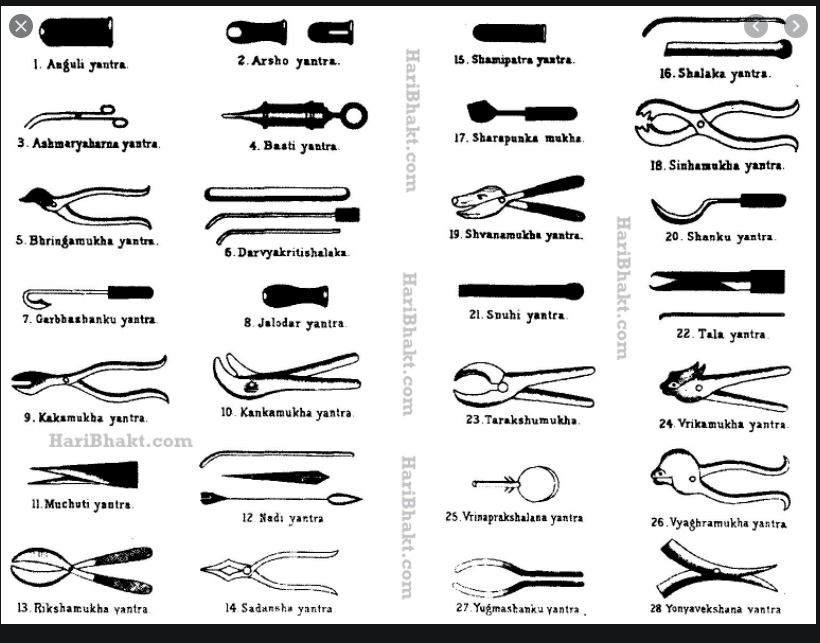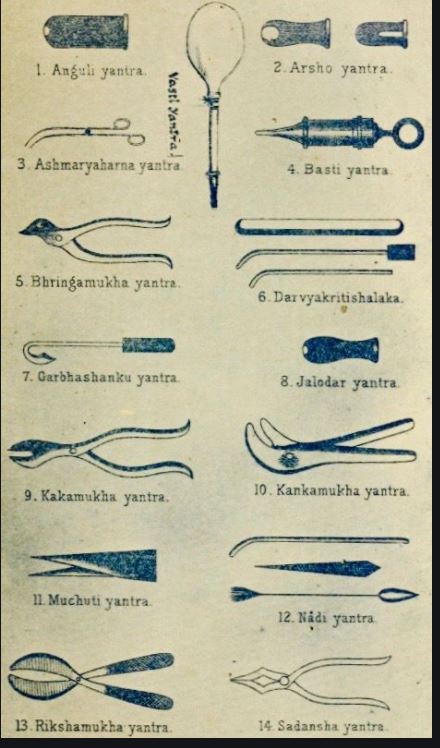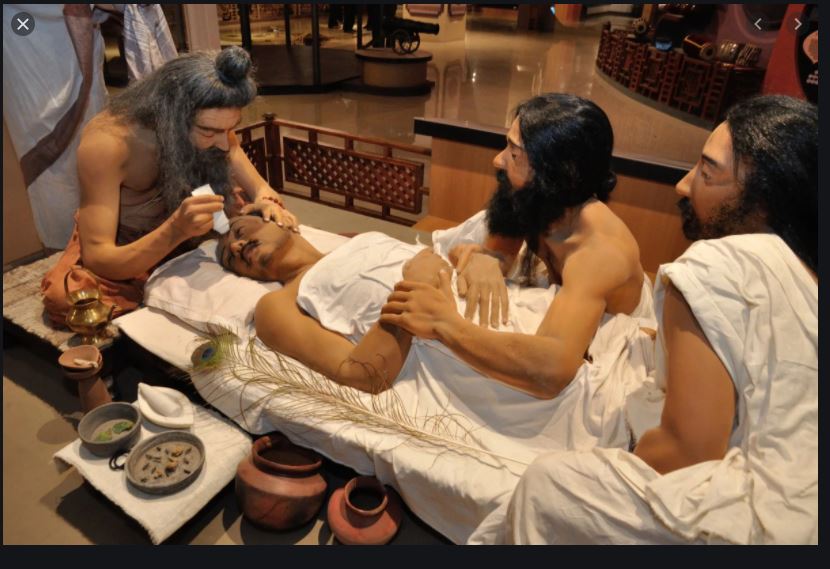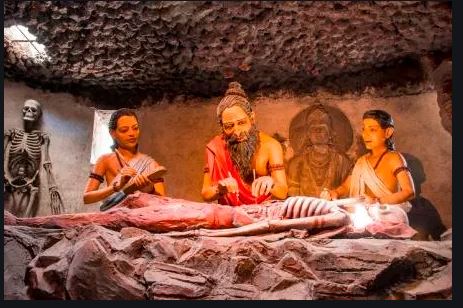
Dec 17, 2020
Is Surgery a Monopoly?
In a notification issued on November 19 by the Central Council for Indian Medicine (CCIM), the legal entity of the Ministry of AYUSH, which regulates the Indian medical system, Ayurvedic doctors were ordered by giving permission to perform a total of 58 surgical procedures, this includes 39 general surgical procedures and 19 specialised surgeries on eye, nose, ear and throat.
However, the Indian Medical Association, an organisation of allopathic doctors, has, as usual, come out in protest against the notification.
By this order the whole of modern medicine is being deceived, adversely affecting the current global acceptance of medical degrees in India, and they have begun the war by raising tactical arguments such as that the amalgamation of medical sciences is a fraudulent move.
Similar organised attempt was seen Years ago when the Ayurvedic education curriculum was modernised and the degree of "Bachelor of Ayurvedic Medicine and Surgery" was introduced.
IMA had come out with protest when Union Health Minister, Dr. Harsha Vardhan, announced the Ayurvedic protocol for the treatment of Covid, and repeatedly said that there is no cure for the virus in modern medicine.
It is illogical to interpret the reforms in the field of Ayurveda as an attempt to shake the foundations of the health standards (?) Achieved by the modern world; Rather, it is intolerance to other medical sciences and it is a medical extremism, It is a fact that these surgeries have been performed on a small scale in Ayurvedic institutes and hospitals for the last twenty five years.CCIM spokespersons explain that the current notification is only to give legal protection to this and therefore there is no basis for this objection.
The Ministry of AYUSH has further clarified that technical terms and modern developments in science are the common property of mankind and no one can be prevented from using them. Dr.Jayant Pujari, Chairman, CCIM Ayurveda Regulatory Board, points out that the IMA's opposition is merely hypocritical.
About 95% of ICUs across the country are managed by AYUSH doctors. They are trained by allopathic doctors itself. This is done to make money. These same doctors are the ones that sit in the IMA and oppose AYUSH doctors.
Isn't this hypocrisy? He also said that the IMA should not despise Ayurveda, which has been traditionally practiced in India for a long time and has proven to be very effective. They must be prepared to show a broad mindset for accepting ancient Indian scientific knowledge. Dr. Poojary also demanded that the IMA should get rid of the narrow selfishness and intolerance that is now being expressed in this regard.
It can be said without any doubt that the organisational leaders who oppose this order are those who have a factual misunderstanding.
It has been many years since, started teaching the theory of surgery to Ayurvedic doctors who are pursuing postgraduate degrees in Shalya Tantra and Shalakya Tantra. However, there was an inadequacy of practical training in this regard.
The new notification aims to address this and provide practical training.
Historical records show that many therapies that claim to belong to modern medicine, such as surgery, existed in Ayurveda for millennia.
The "Sushruta Samhita" describing surgeries, written by Sushruta, an ancient Indian medical scholar is a textbook for Ayurvedic graduate and postgraduate studies. This treatise describes over 300 surgical procedures and over 120 surgical instruments. At first glance it may seem surprising to know that modern medicine is still dealing with a modified version of these devices.



Sushruta, the author of the Sushruta Samhita, is recognised not only in India but all over the world as the "Father of Surgery".

The Royal Australian College of Surgeons (RCS) is responsible for training surgeons and raising the standard of surgery in Australia and New Zealand. In their headquarters, a statue of Sushruta, a great Indian physician, can be seen. There is also an inscription on the plaque describing him as the "Father of Surgery". An English translation of the Sushruta Samhita describing Sushruta's treatment is also kept there as a treasure.
The treatise describes Sushruta's opinion of the best surgeon as follows. “Must be of good courage, always with a presence of mind, with a hand free from sweat, one who select sharp and sure instruments, and one who uses surgery only for the success and achievement of the patient.
He must be conscious of the fact that the patient that lie ahead is the one who has entrusted his life to the surgeon, and must respect the patient's complete surrender and regard the patient undergoing surgery as his own son. "
If the history of science is traced back to origins, it will reach a time which cannot be marked in ancient time period.
Starting from there, the science of medicine and surgery has made great strides today. But it can be observed that many of the techniques practiced today has its origins from practices of ancient Indian scholars.
It is still a wonder that all the surgeries in general are summarised under the eight headings of Chhedana (excision), Bhedana (incision), Lekhana (scrapping/debridement), Eshana (probing), Aharana (extraction), Visravana (drianage), Seevana (suturing).
In his writings, Sushruta describes the basic principles of surgery, such as planning accuracy, prevention of hemorrhage, and completeness, as well as various reconstructive procedures for various disorders.
Sushruta gives a detailed description of 60 types of sub-procedures for the treatment of wounds, details of treatment for 12 types of fractures and six types of dislocation. This is what orthopedic surgeons still do today. This treatise also mentions the principles of traction, manipulation, apposition, stabilisation and post-operative physiotherapy.
Sushruta has also performed NasaSandhan (Rhinoplasty) KarnaSandhan (Otoplasty) and Oshtha Sandhan (Lobuloplasty).



Similar organized attempt was seen Years ago when the Ayurvedic education curriculum was modernised and the degree of "Bachelor of Ayurvedic Medicine and Surgery" was introduced.
The Rhinoplasty, described in 600 BC, has been described as the Indian flap and the pioneer of plastic surgery.
Injuries to the body caused by accidents are described in six categories - Chhinna ( Excised ) Bhinna (Incised ) Viddha (Punctured ) Kshat (Crushed ) Picchit (Contused) and Ghrishta (Abrased).
Bloodletting was also done for some diseases. Intoxicants such as wine, cannabis indica and opium were used to make the operation painless and successful.
Prior to the advent of antibiotics, allopathic medicine adopted these same methods; IMAs are forgetting all that.
Plastic surgery and dental surgery were practiced in India even in ancient times.The students were properly trained in the models. It was also stipulated that new students must have at least six years of training before starting practice.
The practice of taking pledge in students existed even then . He taught students his surgical skills in various experimental models.

Sushruta was one of the first in human history to suggest that a student pursuing dissection surgery should study the human body and its organs.
For Sushruta, health was not just physical well-being, but also mental well-being.
Equilibrium of Tridosha (three humors), good nutrition, proper elimination of waste, and comfortable maintenance of body and mind were all portrayed as the four pillars of health care.
He notes that the "surgical department" is the first and most important branch of medicine, because it gives immediate results; So it has its own value.
Surgery becomes inevitable in certain cases as it prolongs lifespan and improves the quality of life. From the above information, it is crystal clear that surgery is not the monopoly of modern medicine.
How to prevent post-surgery infections; how treat it? An organisation leader expressed concern that all of this exist only in modern medicine.
An essay will be required to clarify this matter with reason. Instead, here is a summary of the case report of an article written by Dr. Sanjay Jain in the Journal of Ayurveda and Integrated Medicine (2017 Oct -Dec 8 (4) 263-265) entitled "The Role of Ayurvedic Management in Preventing Surgical Site Infections Instead of Surgical Antibiotic Prophylaxis".
The 83-year-old man, a retired law professor and a former soldier, of lean body nature and 50kg weight, came in with complaints of prostate inflammation. No history of diabetes, hypertension or any cardiovascular disease. He had led a very disciplined life.
He could not take any antibiotics in his lifetime, because his body would react strongly whenever he tried. So he had been using Ayurvedic medicines for years. But later, surgery became inevitable. The challenge was to perform this unavoidable surgery without the use of antibiotics.
This challenge was undertaken in the great interest of the patient. Holmium laser nucleation of prostate (HOLEP) surgery was performed under spinal anesthesia. The surgery took four hours.No antibiotics were given before or after the surgery. Instead, Ayurvedic medicines were started 3 days before the surgery and was continued after the surgery. The patient recovered and regained health fastly in a shorter time than with the usual antibiotic.
The Ayurvedic medicines were prescribed by a team comprising Dr. GG Gangadharan (Bangalore).
• Giloy (Tinospora cordifolia)• Neem (Azadirachta indica)• Tulsi (Ocimum sanctum)
• Shigru (Moringa oleifera)• Amla (Emblica officinalis)• Haldi extract (Curcuma longa)
• Panchtikta ghrita guggulu (combination of many herbs and ghee).
This was the combination of drugs used ( from the Article by Dr. Sanjay Jain -Orthopaedic Surgeon).
Modern medicine, in the form of antibiotic resistance, is facing the worst existential crisis ever, threatening bacterial infections and the very operation of surgery.This is because modern medicine relies heavily on antibiotics for treatment and prevention.
How was surgery performed before Joseph Lister invented the "antiseptic principle" in 1867, and then until the invention of the antibiotic in 1928?
With the availability of antibiotics in the market, the health problems that existed until then, actually changed to another level.
It is only recently that we have come to realize that the harms, disasters, and the diseases caused by the use of antibiotics are far greater than the diseases they cure.
Aware of the impending catastrophe in near future, for the past several years, the World Health Organization has been celebrating November 13-19 as Awareness Week with the message "antibiotic; handle with care".The case report mentioned above suggests that Ayurveda is capable of performing surgery during this era even without antibiotics.
In the early nineteenth century, Hessler published the first European translation of the Sushruta Samhita in Latin and Muller in German. The first complete English translation was done by Kaviraj Kunja Lal Bhishagratna in three volumes in 1907 in Calcutta. In Tibetan literature, Sushruta is known as the medical authority.
It can be seen that even the basic concept of vaccination is a part of Ayurveda. This system was used in Ayurveda as early as the seventeenth century.
It was in the name of 'Charaka', the author of the oldest work on Indian medicine that a club was found by Medical professionals who deal with the literary, artistic, and historical aspects of medicine in New York in 1894.This is made clear in Girindranath Mukhopadhyay's book "History of Indian Medicine" (Part One, Page 32).
Discovery of Herophilus in the fourth century BC confirmed the perspective of the great Indian physicians who understood the interrelationship between heart and nerve pulse through Nadi Pareeksha.The "Haritha Samhita" of Haritha and the Brihadharanyaka Upanishad, states that the heart is a fleshy organ in the shape of a lotus and that blood circulates through the ten veins. William Harvey gave the same account to the world in 1616 AD, thousands of years after India came to know this information.
Physicians of that time used tubes made from animal horns to hear the heartbeat. A similar principle was used in 1816 by Rene Stephen Hales on a stethoscope. The scientific approach of our ancestral medical resources can be understood by listing several such examples.
Many of the things described in Ayurveda were discovered by modern science thousands of years later; It’s just that it has changed over time.
The classification between Tridosha and genes was that what Dr. MS Valyathan and his team found through research. List of undiscovered is more than that of discovered. The development of Ayurveda has been hampered for centuries; But even then, modern medicine continued to develop.
The barriers that the IMA is now raising are a continuation of that distorted culture.
Covid 19 reminds us that the rise of Ayurveda, the Indian medical science, is a necessity of the times.
It is the duty of a government that believes in Indian culture to bring back to full strength the surgical department that has been removed by stakeholders from the Ayurvedic treatment system.
The first thing to be done after regaining independence is to respect those who have preserved the former wealth that was lost or forcibly lost in the flood of external tradition, and to work diligently to rectify the shortcomings of that wealth and restore it to its former state.
It is due to intellectual slavery, bankruptcy and arrogance adorned by IMA officials in India, that they are not able to consciously appreciate or be proud of the greatness of one's own heritage. The same was what The chairman of the CCIM Ayurveda Regulatory Board, Dr.Jayant Pujari asked to change.
It is common for the representative of an organisation to organize strikes or protests with special demands. But the IMA is the first organization in the world to protest against giving something to others.
Claiming a monopoly on surgery, the IMA's attempt to oppose the timely reforms in the field of Ayurveda is futile and will be ruthlessly rejected by those who believe in Indian culture.
Hippocrates, the father of modern medicine, said that food is your medicine; Medicine is your food. But what about today? A condition in which you consume dangerous drugs just like you eat food.!!!
The goal of education in India today is to spread and perpetuate Western sciences and culture. An exception to this is the handful of disciplines, including Ayurveda.
Seven decades after independence, our education system has not changed much supportive of Indian culture, because those responsible are in Meckel's intrigue and under intoxication by Western culture.
Their knowledge and thoughts are against Indian cultures. There are evil minds even in our country who join hands with their enemies to oppose their own mother.
While denigrating Ayurveda and glorifying allopathy, one thing to keep in mind is that in 1540 CE (Common era) a barber-surgeons company was formed by English barbers and surgeons of the time.
They did tooth extraction and bloodletting together !!
Can any truth be untrue for the sole reason that it is a few years old?
You may be more qualified than your ancestors and possess technically superior talent, but never dare to despise your ancestors and the past because your real owners are the ancestors and the past.
Jay Dhanwantari !!!
DR. M P MITHRA
Retired Senior Medical Officer
Dept. of Indian Systems of Medicine Punnasseri
Kottayam - 686 001
Phone: 0481 2301010/2584 584
Mobile: +91 94470 58458
AYULIFE HEARTCARE CENTER
E mail : drmpmitra@rediffmail.com
Website : http://www.ayulifeheartcare.com/
We serve to correct the heart naturally



